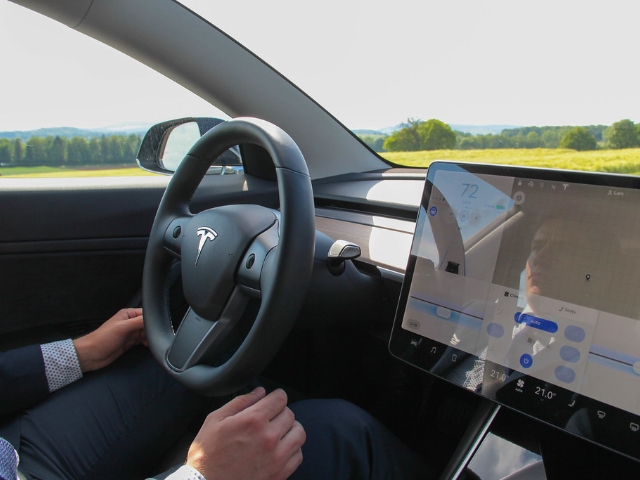[imagesource:flickr]
Video and data from over 200 Tesla Autopilot crashes, analysed by the Wall Street Journal, expose a chilling reality: Tesla’s camera-based technology, long criticised for its deviations from industry standards, is failing on the roads, endangering lives and confirming the worst fears about its safety.
The WSJ published a critical video about Tesla’s driver-assist systems, highlighting “longstanding concerns” regarding the company’s camera-based technology.
The video, a crucial piece of the Journal’s in-depth investigation into Tesla’s Autopilot system, reveals that this flawed technology has played a significant role in numerous crashes, including several that resulted in fatalities.
The investigation, which collected data and video from over 200 Tesla Autopilot crashes, uncovers how the driver-assist algorithms process real-time inputs from Tesla Vision cameras, exposing critical flaws in the technology’s decision-making during these incidents.
The video spotlights a tragic accident from May 2021, where Steven Hendrickson, driving his Tesla Model 3 in Autopilot mode on his way to work, was killed. As an overturned double trailer loomed on the highway, Tesla’s system failed to detect it, leading to a catastrophic full-speed collision that claimed Hendrickson’s life.
“The kind of things that tend to go wrong with these systems are things like it was not trained on the pictures of an overturned double trailer. It just didn’t know what it was,” said experts who reviewed the footage.
Meanwhile, lives are ruined.
The WSJ’s video points out similar issues where Autopilot misinterprets the lights of emergency vehicles, leading to crashes.
The Wall Street Journal cross-referenced individual state accident reports with the federal database maintained by the National Highway Traffic Safety Administration (NHTSA) and reenacted 222 Tesla crashes. Of these, 44 incidents occurred when Teslas on Autopilot “veered suddenly,” and 31 happened when the vehicles “failed to stop or yield,” with the latter causing the most severe accidents.
The investigation notes that Tesla’s self-driving crashes result from both hardware and software issues, including slow algorithm updates and inadequate camera calibration. While the findings raise significant concerns, more independent analysis may be necessary to challenge Elon Musk’s assertion that Tesla’s self-driving feature is ultimately safer than human drivers.
Analysts who reviewed the crash footage and the Autopilot system’s algorithmic operations indicated that it would take time to train the system to handle all road scenarios.
If you’re a subscriber, you can catch the full video over here.
In other creepy Tesla news, someone in Georgia posted about all the odd health effects they felt when they drove their Tesla across long distances, such as extreme fatigue, debilitating shoulder and neck pain, nose bleeds, nausea and hair loss.
The woman named Elle claimed that her Tesla negatively impacted her and her husband’s health so much that they ultimately sold the electric vehicle and started feeling much stronger straight away.
“I would come home from grocery shopping and need to lay down in bed for 20 minutes before I could even unload the car. This was after a total of around 2 hours on the road, so at first I didn’t think anything of it.”
Detailing another of her symptoms, Elle went on: “I’ve never had nosebleeds in my entire life but suddenly had red-tinged tissue after blowing my nose many times.:
While it isn’t 100% clear that it was the car causing such symptoms, Elle says that all their ailments have disappeared since they sold their vehicle.
Going through the comments, she seems to have landed on one possible conclusion: mould.
“After reading comments on my last post, I think it’s likely the car was contaminated with hidden mold.”
Dozens of people have since taken to the comments section of Elle’s posts to share their own experiences of feeling unwell after having been in a Tesla.
One person claimed: “My sister and brother in law had something similar happen to them. They sent the car in for repairs and it ended up being MOLD EVERYWHERE.”
“I knew a couple who bought a Tesla and about 6 months later the husband became extremely ill and they swear it all started after buying the Tesla,” a second said.
Meanwhile, one guy on Reddit two years ago shared a video of the interior of his Tesla covered in mould and claimed that the car was only left in his garage for a month.
DailyMail also notes that there are a bunch of reports propping up of electric car drivers suffering motion sickness, dizziness and nausea from the vehicles’ braking and acceleration systems.
Tesla has been accused of being the ‘worst offender’ for causing motion sickness from its one-pedal throttle because they can be ‘very jerky and really abrupt,’ Ed Kim, president and chief analyst of AutoPacific told ABC News.
However, there is no research supporting the claims that electric vehicles cause nosebleeds, hair loss or extreme fatigue. Debra Holtz, a spokesperson for the Clean Transportation Program told DailyMail.com: ‘Our transportation experts at the Union of Concerned Scientists are unaware of any illnesses caused by electric vehicles.’
Electric vehicles are still considered to be the better alternative to gas-powered vehicles, despite any potential risks, because of their positive effects on carbon emissions.
In this day and age, our dilemma continues to be choosing the lesser of two evils.
[source:wsj&investing.com]





